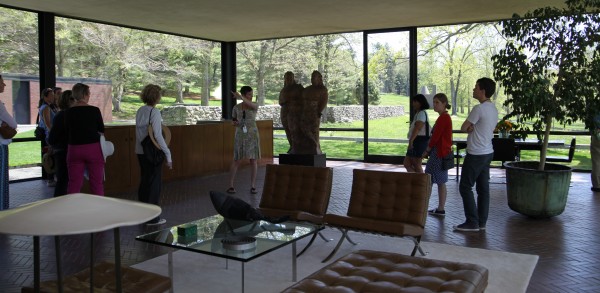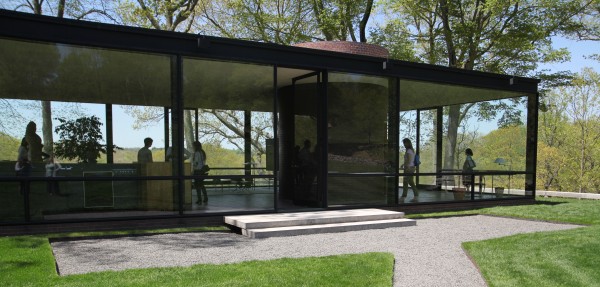Philip Johnson’s Glass House draws international crowd
Amid the large traditional country dwellings along a quiet residential street in New Canaan sits The Glass House, once the residence of its creator, architect Philip Johnson.
With its airy, glass-enclosed exterior and open floor plan, the house and its 49-acre site ”” which Johnson thought of as part country home, part laboratory ”“ draw about 14,000 visitors per year from near and far. And that”™s fitting.
“He liked to collect people, concepts and ideas,” said tour guide Laura Case, leading a group of visitors from Australia, Belgium, France and the U.S. on a recent afternoon.
In 1943, Johnson graduated from Harvard University”™s Graduate School of Design. He became part of what would be known as the Harvard Five, a group of modernist architects who built and lived in New Canaan in the 1940s and ”™50s.
But before settling in The Glass House, Johnson lived and worked in Manhattan, where he was the founding director of the Department of Architecture at The Museum of Modern Art in the early 1930s. Some of his work in Manhattan includes the AT&T Building (now Sony Plaza), the New York State Theater (now the David H. Koch Theater) at Lincoln Center and the Seagram Building and its Four Seasons Restaurant. He also designed, with John Burgee, Purchase College”™s Neuberger Museum of Art.
In New Canaan, Johnson bought five acres on Ponus Ridge Road in 1946 and began designing the 1,810-square-foot house, which was completed in 1949. From then until his death in 2005, he lived in the home, at first on weekends then year-round, a majority of the time with partner David Whitney, a curator and art collector. Johnson called the property his “50-year diary,” to which he added acres of land, 14 buildings, art ”” and different people he met in the art world and on his travels.
Johnson moved on from modernism after building the house, Case said.
“He changed all the time,” Case said. “He got bored. He wanted to keep moving.”
In 1986, Johnson bequeathed The Glass House to the Natural Trust for Historic Preservation, which opened it for tours in 2007. According to Case, the tours, which run from May to November, are usually full on weekends.

- Tour guide Laura Case shows visitors the inside of The Glass House, which has an open floor plan with no walls. Photo by Danielle Brody
For some it is the property, rather than the house itself, that stands out. Through the house”™s glass walls sectioned by black painted steel, the one-room home almost disappears into the landscape, serving as a frame for the tall oak trees and valley in the foreground.
Johnson meticulously landscaped the woods behind his house, clearing brush and having a pond built. On its edge, he created a pavilion, an experiment with concrete, scale and arches. On a hill behind the pond stands a 30-foot-tall “staircase to nowhere,” a memorial to his friend, Lincoln Kirstein, co-founder with George Balanchine of the New York City Ballet. The staircase has an element of “safe danger,” Case said.
“He liked to keep people a little on edge,” Case said.
Johnson also designed with the idea of procession in mind, she said. Visitors have to walk single-file over the narrow Eyebrow Bridge, inspired by his grandparents”™ Ohio farm and designed to have a slight spring, which brings them to the painting gallery.
It was built in the image of a bunker during the Cold War era and the ancient Greek “beehive” Tomb of Agamemnon. Johnson left specific instructions never to power-wash the hand-stippled, red sandstone exterior, Case said.
He also purposely did not fill the gallery with too many paintings, because even he suffered from “museum fatigue,” she added. The large canvases rotate, showing Johnson”™s affinity for collecting and variety.
Today the property is alive with new art, entertainment and parties. The space hosts photo shoots as well as exhibits and performances, recently for J.Crew and Tod”™s, said Christa Carr, communications director. People can rent the space for dinner parties, bar mitzvahs and weddings. For $30,000, two guests can sleep in the home and host a dinner for 10, she said.
Regular visits generally range from $25 to $250, depending on the type of tour.
This article was first published in WAG magazine, the Business Journal”™s sister publication.
